Aigues-Mortes: City of Dead Waters
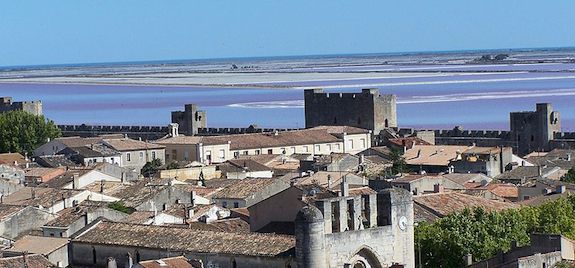
- SUBSCRIBE
- ALREADY SUBSCRIBED?
BECOME A BONJOUR PARIS MEMBER
Gain full access to our collection of over 5,000 articles and bring the City of Light into your life. Just 60 USD per year.
Find out why you should become a member here.
Sign in
Fill in your credentials below.

Aigues-Mortes: The City of Dead Waters
Is there a more melancholy city name than Aigues-Mortes? This medieval city of “dead waters” is named after the swamps and lagoons that graced the landscape centuries ago. The city was built on stilts, so to speak: its oak staves helped it hover above the marshland.
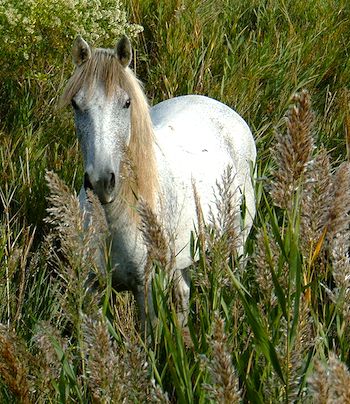 The road to Aigues-Mortes is studded with Camargue horses, those ivory-coated soldiers of the swamp (although the number of horse ranches is starting to rival the horses). Still, the sight of these elegantly rugged steeds amid the tamarisk and reeds signals a return to an era when kings and knights rode for crusades rather than equestrian hankerings.
The road to Aigues-Mortes is studded with Camargue horses, those ivory-coated soldiers of the swamp (although the number of horse ranches is starting to rival the horses). Still, the sight of these elegantly rugged steeds amid the tamarisk and reeds signals a return to an era when kings and knights rode for crusades rather than equestrian hankerings.
The pious King Louis IX of France rebuilt this port city of the Petite Camargue, which straddles the Mediterranean Sea and the Rhône River. Today, Aigues Mortes is somewhat removed from its years as a thriving port, but its founder would be pleased to see that the wheels of commerce still turn steadily—albeit for tourism rather than theological conviction. (At least sea salt production is still an integral part of the economy.)
The citadel erupts into view from a checkerboard of russet roofs. Its limestone blocks were transported by boat to Aigues-Mortes and the ramparts, which form a one-mile fortress, are immaculately preserved. It is anchored by the indomitable Tour de Constance, an unassailable tower that now includes the ultimate modern amenity: an elevator. (But the gargoyles perched on the gates are much less formidable, having been sanded down by the elements.)
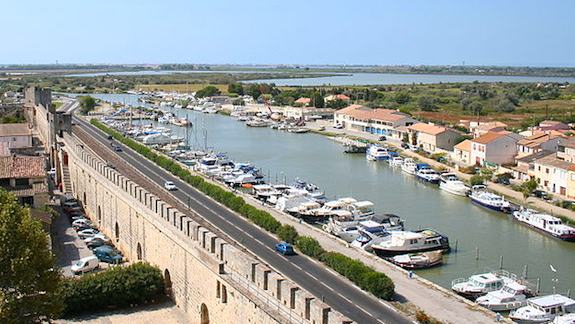
The expanded summer population is in great evidence, particularly in the parking lots. (A caveat: the lot requires a driver with eyes in the back of the head, the patience of Job, and a preternatural gift for seeing around corners and large families toting babies and baskets.)
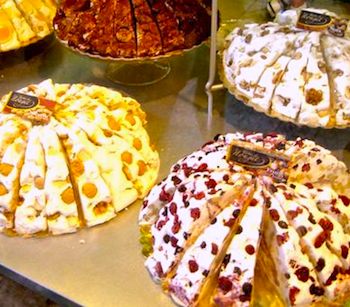
When you enter the western archway, there is the flippant juxtaposition of two kings: a cutout of King Louis IX in front of the ticket office thumbs its nose at a finely etched mosaic of the king mounted on a white horse, which is embedded in the archway.
You’ll also notice that the walls conceal a cacophony reminiscent of Babylon: bellowing merchants and overzealous tourists crowd Grande Rue Jean Jaurès. The varnished cobblestones of this crowded walkway make you feel like you’re hurtling through the Paris Métro. Machines swirl frothy, fluorescent gelato; postcard stands spin on tilted axes while vendors languidly smoke cigarette butts. At Poitavin Frères (8, grande rue Jean Jaurès), sublime, fluffy pies of nougat embedded with pistachios and candied orange peels are invitations to gluttony.
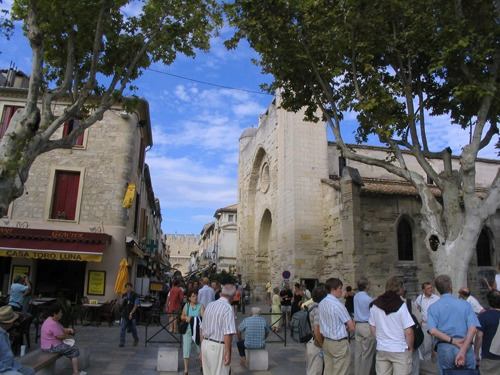
The Gothic church, Notre Dame des Sablons, is a welcome respite from the frenetic throngs. (The blasé security guard thumbing through the latest issue of Vogue France doesn’t do it justice.) It has been restored numerous times and been used as a temple, barracks and salt warehouse. But the contemporary, stained glass windows by Claude Viallat are jarring next to the more demure stone accoutrements and gilded statues.
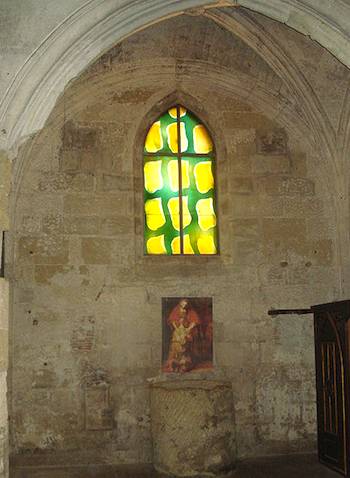 When you exit the dimness, you’re back in the din of a lively courtyard where surly waiters and day-trippers mingle under the watchful eye of King Louis IX. Restaurants are also plentiful, but choose one on a side street, like the Villa Mazarin, for a more intimate experience.
When you exit the dimness, you’re back in the din of a lively courtyard where surly waiters and day-trippers mingle under the watchful eye of King Louis IX. Restaurants are also plentiful, but choose one on a side street, like the Villa Mazarin, for a more intimate experience.
It’s easiest for the poor navigator to do the loop of the 1,650 metres of city walls, but you may find it difficult to resist the enchantment of side streets dotted with wild irises and French poppies. (You’re also less likely to be mowed down by the many vehicles that circulate through the city, intent on achieving maximum velocity.) Another way to explore Aigues-Mortes is to hop on Le Petit Train d’Aigues-Mortes, which is perfect for the “non-perambulator”—and moves at a more sedate speed.
But the town has more than gates and gargoyles; it also has more than 7,500 inhabitants. It’s impossible not to romanticize their lives: the sun-dappled courtyards overflowing with geraniums, the sense of living and breathing history. But then a woman steps out on the balcony to hang laundry and the spell is briefly broken. Still, she has a more enviable perspective doing this mundane task than many of us will ever enjoy.
PRACTICAL INFO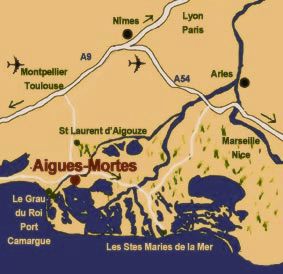
For train schedules within France, visit Voyages-sncf. For train travel from anywhere in Europe to Aigues-Mortes, visit Rail Europe.
For bus information, visit Autocars Telleschi/Cartreize or call 04-42-28-40-22. (The town only has a bus stop.)
If you’re driving to Aigues-Mortes, take D979 south from Gallargues, or A9 from Montpellier or Nîmes.
PHOTO CREDITS: (Images via Wikimedia Commons: authors: Baptiste Rossi; Ingo Mehling; Hedwig Storch, Gachepi, Virtual Tourist: mickebear and Flickr: author: Cara Waterfall)
Cara Waterfall aspires to a Parisian state of mind—their manifesto for life, their appreciation for les petits plaisirs. A former Paris resident, writing for BonjourParis sparks her dreams of Paris. Please click on her name to read more about her and to see other stories she written for BonjourParis.
Subscribe for FREE weekly newsletters with subscriber-only content.
BonjourParis has been a leading France travel and French lifestyle site since 1995.
Readers’ Favorites: Top 100 Books, imports & more at our Amazon store
Update your library…click on an image for details.
Thank you for using our link to Amazon.com…your purchases support our free site.




.jpg)


